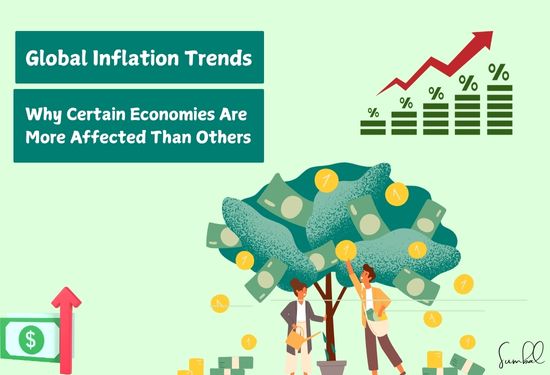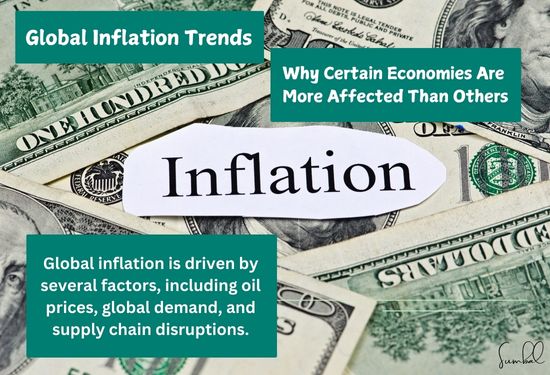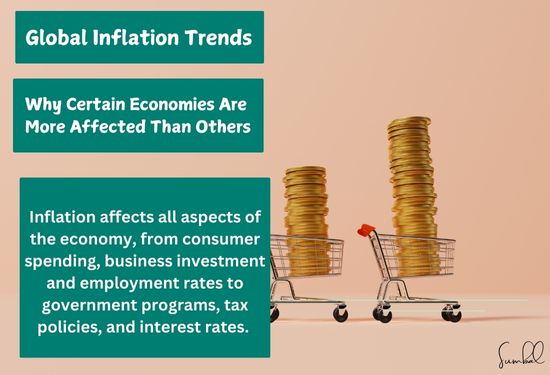Globally, inflation varies by country, with some experiencing inflation and others not. While some experienced hyperinflation, which destabilizes their economy, others experience steady and stable inflation. It is implied by differential knowledge of why inflation differs between countries and what it would entail for global commerce and investment in general.

Factors Contributing to Differing Inflation Rates
- Economic Structure and Development
The inflation rates are normally lower and more stable in the developed countries than the emerging and developing economies. Developed countries like the USA and Germany have well-developed manufacturing units, sound financial structures, and other apparatuses that support price stability.
On the other hand, developing countries suffer inflationary pressures mainly due to the employment of agriculture or resource sectors that fluctuate in their production. A poor yield in agriculture or changes in oil prices, for instance, can have a big effect on inflation in these economies.
- Monetary Policy
Central Banks have a part in managing inflation. To control inflation, economies with independently functioning central banks, like those in the European Union or Japan, can employ monetary policy instruments, including interest rate changes and money supply modifications.
However, controlling inflation becomes more difficult in nations where central banks are not given enough autonomy or are subject to political meddling. Hyperinflation countries such as Zimbabwe or Venezuela suffered from the printing of money for government consumption.
- Exchange Rate Dynamics
Inflation rates are determined significantly by exchange rates. Economies with either a weak or depreciating currency always tend to have higher inflation rates because imports become more expensive. For instance, countries that import most of their consumer goods, foods, and or energy tend to record high rates of inflation when their currency falls. - Global Supply Chain Disruptions
Living in an almost fully integrated global economy, disruptions in the supply chain cause inflation to rise across the globe. Additionally, it depends on how much a nation depends on imports. For instance, during the COVID-19 outbreak, countries with low domestic manufacturing capabilities realize steeper supply gaps. - Geopolitical Factors and Conflicts
Conflicts and political instability make inflation worse in the impacted nations. Prices for necessities rise due to market disruptions caused by trade restrictions, wars, or bans. For example, the conflict between Russia and Ukraine, which disproportionately affected nations that depend on regional imports, produced a global surge in grain and oil prices.

Implications for International Trade and Investments
- Trade Competitiveness
High inflation adversely affects the competitiveness of a nation’s trade because it raises the price of products manufactured within the country. Exporters from countries with high inflation rates will be able to compete for markets, hence making imports more appealing to local markets. - Investment Climate
Low inflation stability makes a country’s economy less attractive to investors in the international market. Inflation uncertainty raises risks and fluctuations, worsens returns, and hampers long-term investment strategies. However, because of their steady economic conditions, countries with stable inflation rates attract more investment. - Currency Volatility
Fluctuations in annual inflation levels may bring changes to exchange rates, affecting international trade and investments. High-inflation economies bear a lot of risk for investors since the local currency values are likely to fluctuate. Meanwhile, companies that trade internationally need to adjust their plans to take changing currency rates into consideration.






